Physics 312 Lecture: "Superposition of Waves and Standing Waves II."
Apr 13, 1998
- Standing waves in a tube open at both ends are constrained
to have specific wavelengths and frequencies
- Standing waves in a tube open at only ONE end are constrained
to have slightly different specific wavelengths and frequencies
- Resonance occurs when some periodic force drives a system
with a frequency close to the natural frequency of the system
- If two waves with ALMOST, but not quite, the same frequency
interfere, the result is a wave with a time-varying amplitude;
we call the slow variations in amplitude "beats"
- The beat frequency is simply the difference between the frequencies
of the two original waves
- Complex waves are combinations of a fundamental frequency and
some of its higher harmonics
- The different shapes of complex waves produced by different
musical instruments are detected by our ears as
different timbres
- Any complex wave can be expressed as the sum of simple
sine and cosine waves; this is called Fourier analysis
This lecture discusses material in Chapter 18 of Serway.
-
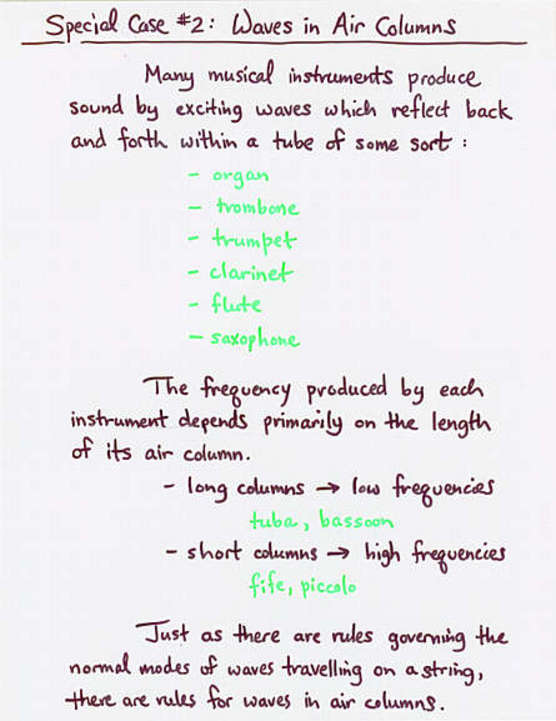 Viewgraph 1
Viewgraph 1
-
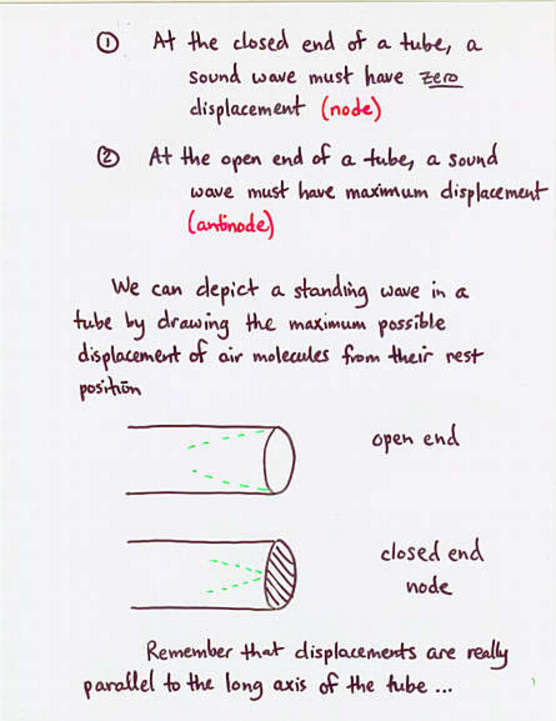 Viewgraph 2
Viewgraph 2
-
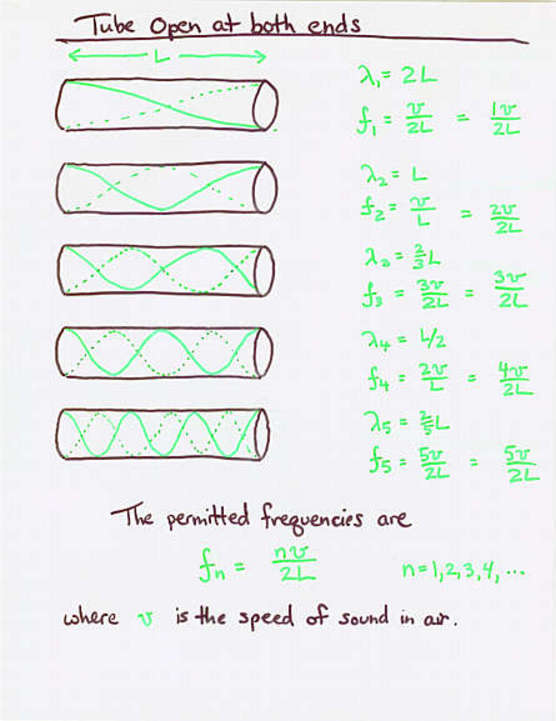 Viewgraph 3
Viewgraph 3
-
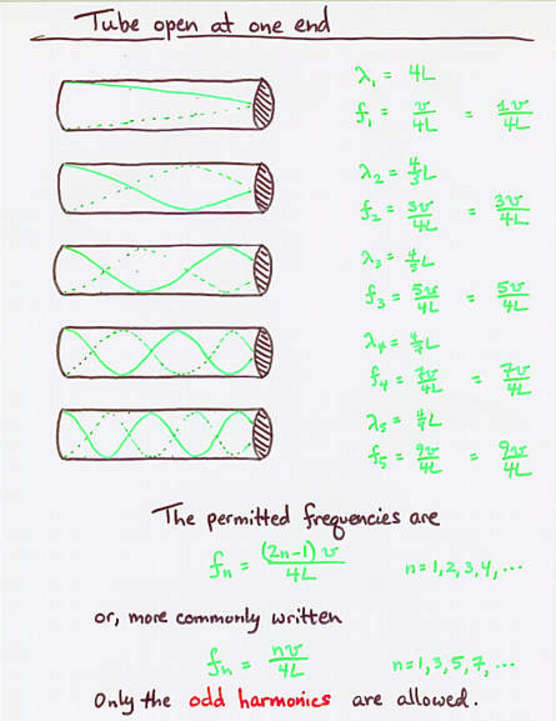 Viewgraph 4
Viewgraph 4
-
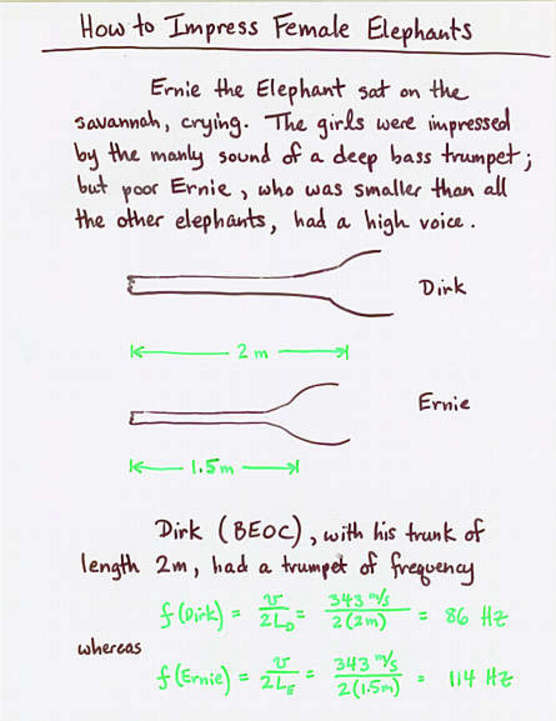 Viewgraph 5
Viewgraph 5
-
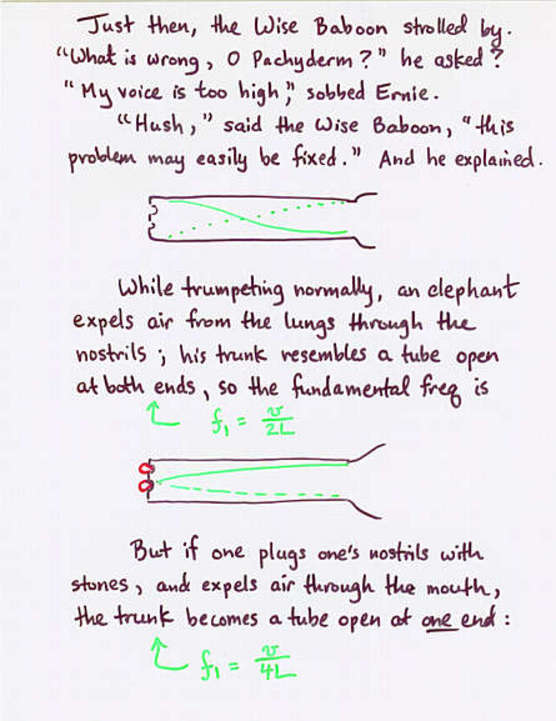 Viewgraph 6
Viewgraph 6
-
 Viewgraph 7
Viewgraph 7
-
 Viewgraph 8
Viewgraph 8
-
 Viewgraph 9
Viewgraph 9
-
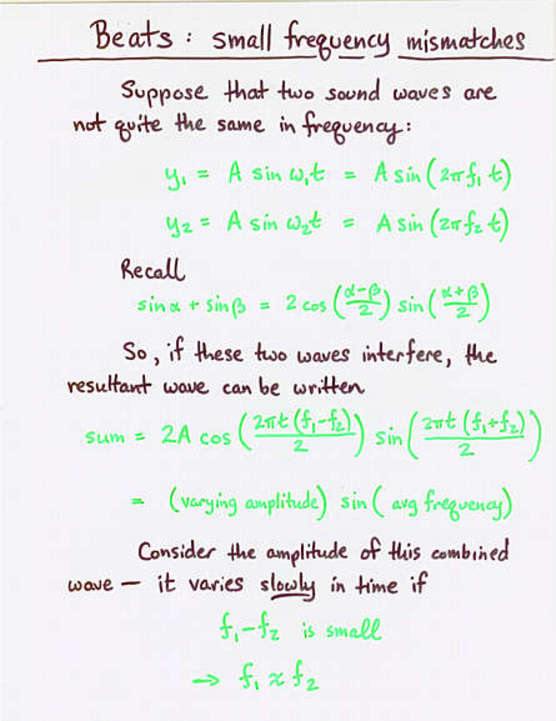 Viewgraph 10
Viewgraph 10
-
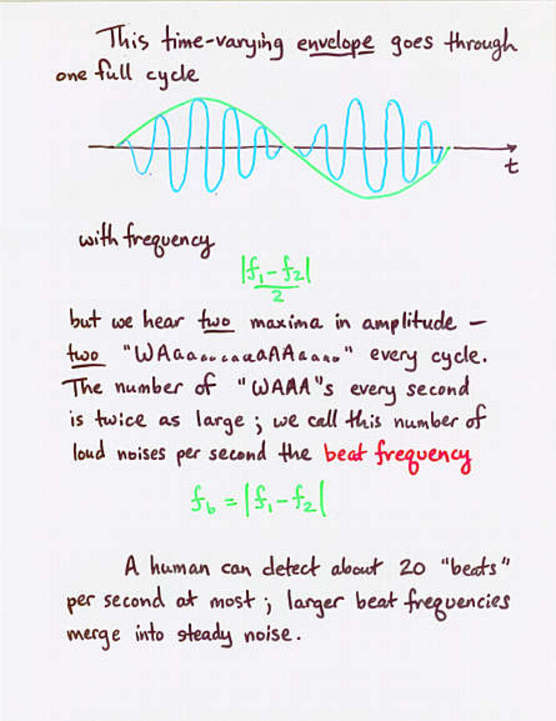 Viewgraph 11
Viewgraph 11
-
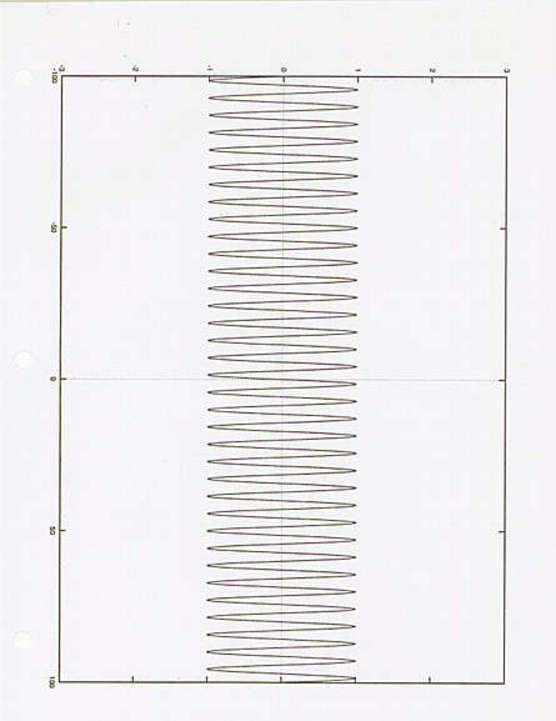 Viewgraph 12
Viewgraph 12
-
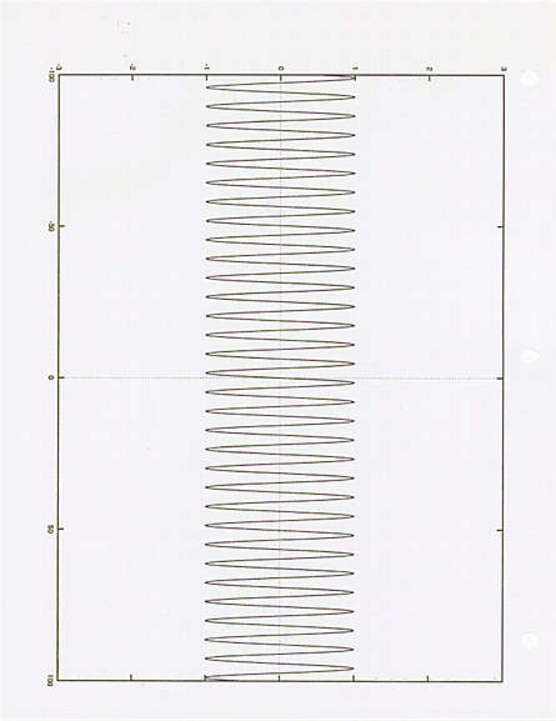 Viewgraph 13
Viewgraph 13
-
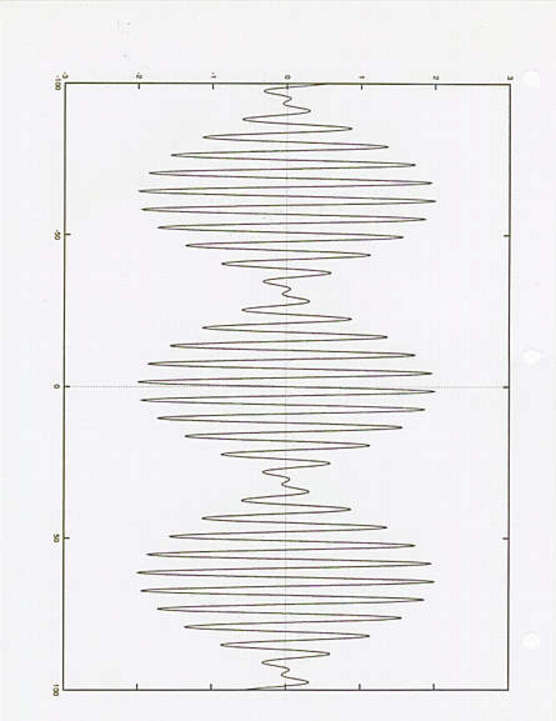 Viewgraph 14
Viewgraph 14
-
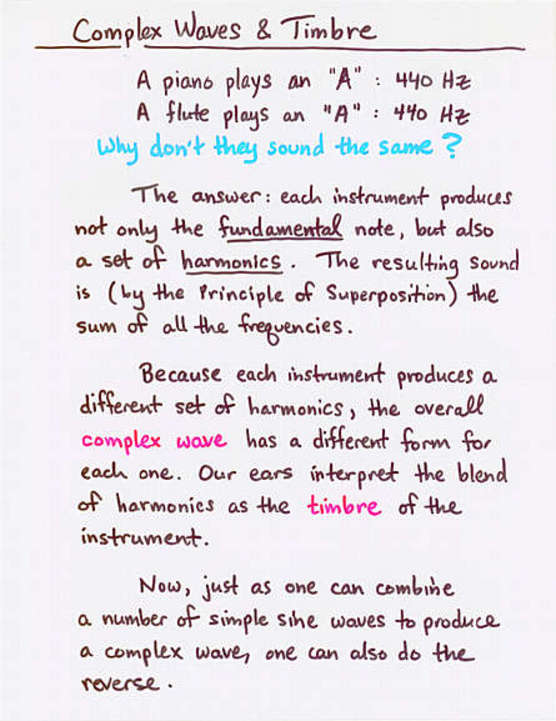 Viewgraph 15
Viewgraph 15
-
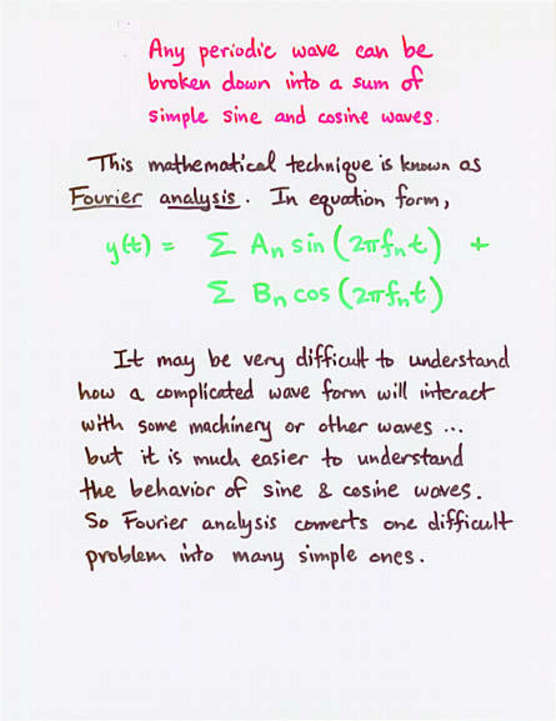 Viewgraph 16
Viewgraph 16
 Viewgraph 1
Viewgraph 1 Viewgraph 2
Viewgraph 2 Viewgraph 3
Viewgraph 3 Viewgraph 4
Viewgraph 4 Viewgraph 5
Viewgraph 5 Viewgraph 6
Viewgraph 6 Viewgraph 7
Viewgraph 7 Viewgraph 8
Viewgraph 8 Viewgraph 9
Viewgraph 9 Viewgraph 10
Viewgraph 10 Viewgraph 11
Viewgraph 11 Viewgraph 12
Viewgraph 12 Viewgraph 13
Viewgraph 13 Viewgraph 14
Viewgraph 14 Viewgraph 15
Viewgraph 15 Viewgraph 16
Viewgraph 16 Viewgraph 1
Viewgraph 1 Viewgraph 2
Viewgraph 2 Viewgraph 3
Viewgraph 3 Viewgraph 4
Viewgraph 4 Viewgraph 5
Viewgraph 5 Viewgraph 6
Viewgraph 6 Viewgraph 7
Viewgraph 7 Viewgraph 8
Viewgraph 8 Viewgraph 9
Viewgraph 9 Viewgraph 10
Viewgraph 10 Viewgraph 11
Viewgraph 11 Viewgraph 12
Viewgraph 12 Viewgraph 13
Viewgraph 13 Viewgraph 14
Viewgraph 14 Viewgraph 15
Viewgraph 15 Viewgraph 16
Viewgraph 16